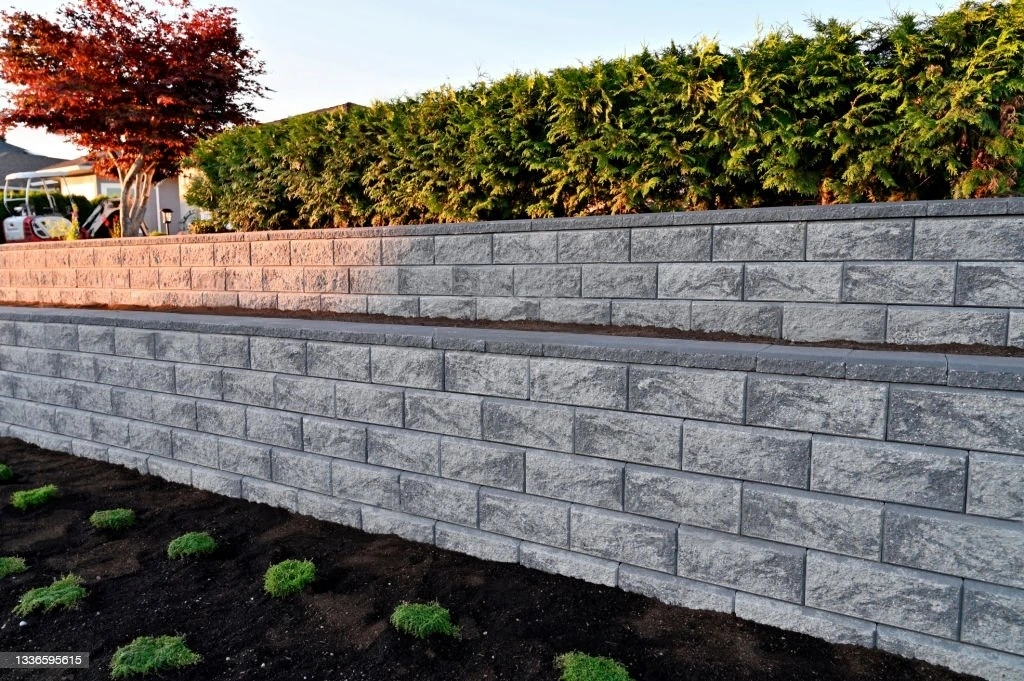Retaining walls play an essential role in supporting soil and preventing erosion. They are commonly used in landscaping and construction projects to create level surfaces and prevent soil from shifting. However, like any other structure, retaining walls can wear down over time and require maintenance or even replacement. In particular, block retaining wall and wall retaining structures are popular choices for their durability and strength, but how often do they need to be replaced?
The lifespan of a retaining wall depends on several factors, including the quality of construction, the materials used, and the amount of stress it experiences. Block retaining walls, which are made of concrete blocks, can last anywhere from 50 to 100 years or more if well-maintained. On the other hand, wall retaining structures made of wood, stone, or brick may require replacement more frequently due to their susceptibility to rotting or weathering.
Knowing when to replace a retaining wall is essential to avoid costly damages or safety hazards. The lifespan of block retaining walls and wall retaining structures, signs that indicate when replacement is necessary, and tips for maintaining the integrity of your retaining wall to extend its lifespan. Whether you are a homeowner or a contractor, this guide will provide you with valuable insights into the lifespan of retaining walls and how to keep them in top condition.
How Long Retaining Wall Last?
Retaining walls are a crucial element in the landscaping and construction industry, serving as a necessary barrier for holding back soil and preventing erosion. However, one important question that arises is how long do these walls last.
The longevity of a retaining wall depends on various factors, including the quality of the materials used, the installation process, and the maintenance it receives. A well-built and properly maintained wall can last for decades, whereas a poorly constructed one can fail within a few years.
The factors that influence their durability and provide insights into how to increase their lifespan. Additionally, we will provide tips on how to recognize signs of damage and when it’s time to repair or replace a retaining wall.
If you’re considering installing a retaining wall or have an existing one, this post will provide valuable information to help you understand the lifespan of your wall and how to ensure it remains structurally sound for years to come.
How Retaining Wall Structure?
Retaining walls are an essential component of landscaping and construction projects, particularly when dealing with uneven terrain. These walls not only provide structural support to keep soil and other materials from sliding or eroding but also enhance the aesthetic appeal of the area.
Block retaining walls, in particular, are a popular choice for both residential and commercial properties due to their durability, versatility, and ease of installation. Whether you’re looking to create an elevated garden, build a terrace, or prevent soil erosion, a block retaining wall can be an ideal solution.
The process of building a wall retaining structure may seem daunting, but with proper planning and execution, it can be a straightforward task. From selecting the right materials to preparing the site and laying the foundation, every step plays a crucial role in ensuring the wall’s stability and longevity.
In this blog post, we will delve into the details of how to build a block retaining wall that not only provides structural support but also adds value to your property. We will cover everything from the initial planning stages to the finishing touches, providing tips and tricks to help you achieve a beautiful and functional retaining wall that will last for years to come.
How Much Retaining Wall Blocks
Retaining walls are a popular choice for homeowners and builders looking to create a stable and visually appealing landscape. However, one of the most important decisions you’ll make when planning a block retaining wall is choosing the right type of block and calculating how many you will need.
Block retaining walls come in a variety of shapes, sizes, and materials. Some common types of blocks used in wall retaining include concrete, stone, and timber. Each material has its own advantages and disadvantages, depending on factors like cost, durability, and aesthetic appeal.
When it comes to figuring out how many block retaining wall units you’ll need, it’s important to take accurate measurements of your project area and consider factors like the height of the wall, the slope of the land, and the weight of the soil behind it. This will help you determine the number of materials you need and ensure a stable, long-lasting wall.
Whether you’re a seasoned DIYer or a novice builder, this guide will help you create a beautiful and functional wall retaining solution for your landscape.





